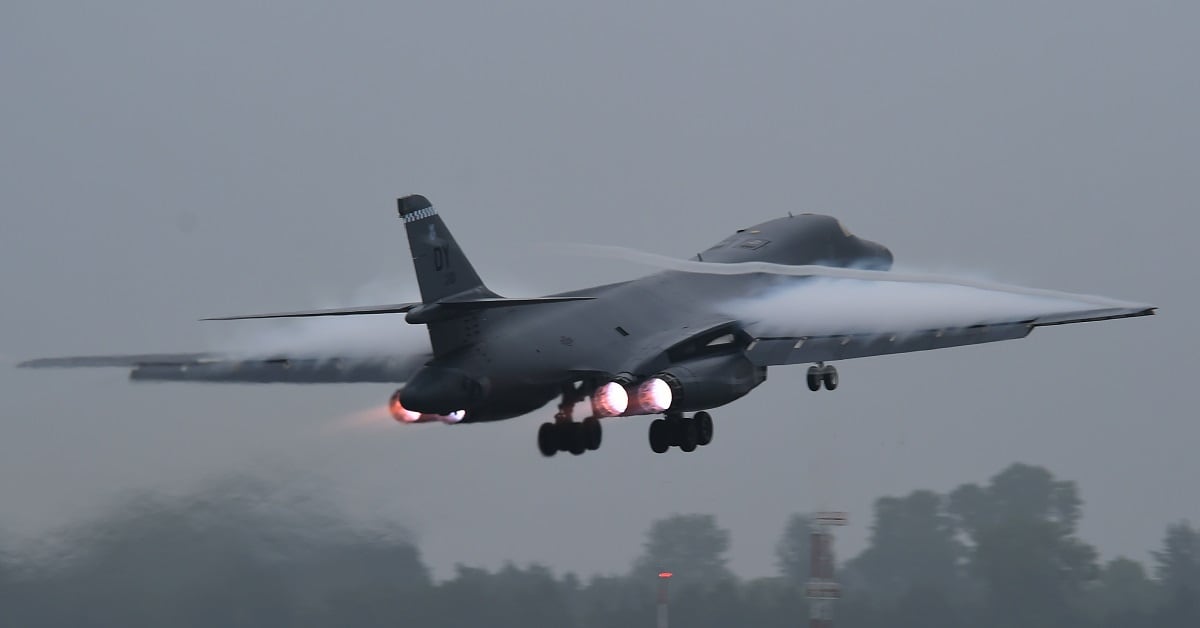Air Force Global Strike Command will resume B-1B Lancer flights this week, following a safety stand-down that began June 7.
The halt in operations came after a safety investigation board found a problem with the bombers’ ejection seat components. That investigation was prompted by a B-1’s emergency landing at Midland International Air and Space Port in Texas on May 1.
The stand-down gave Global Strike Command time to thoroughly evaluate egress components and determine potential risks before returning to flight, according to a Tuesday press release.
“We have high confidence that the fleet’s egress systems are capable and the fleet is ready to return to normal flight operations,” said Maj. Gen. Thomas Bussiere, 8th Air Force Commander, which is responsible for the Air Force bomber fleet.
Although flights operations are restarting, the investigation is still ongoing.
The investigation into the bomber fleets’ egress system was sparked after photos from the May 1 emergency landing showed that the bomber, based out of Dyess Air Force Base, Texas, blew at least one of its four cockpit escape hatches, but the ejection seat did not deploy.
All four crew members landed safely during the incident. However, the Air Force began to question whether the ejection seat had failed altogether.
“The Safety Investigation Board from the May 1 in-flight emergency is still ongoing and we can’t get into the specifics of the investigation because it is privileged information,” Global Strike Command spokeswoman Linda Frost said in an email to Air Force Times.
“The [board’s] purpose is to prevent future mishaps or losses and is comprised of experts who investigate the incident and recommend corrective actions,” Frost added.
The command’s safety stand-down came at a time when the Air Force has been facing greater scrutiny for a series of troubling aircraft mishaps and crashes, some of which have been fatal.
Last month, Chief of Staff Gen. Dave Goldfein ordered a one-day safety stand-down for all flying and maintenance wings in order to collect more data and determine the source of the issue.
The B-1B Lancer is a long-range, supersonic conventional bomber. They have been flown by the U.S. Air Force since 1985, according to Boeing, which produces the aircraft.
“The aircraft is on track to continue flying, at current demanding operations tempo, out to 2040 and beyond, and Boeing partners with the Air Force to keep the B-1 mission ready,” Boeing’s website reads.
Kyle Rempfer was an editor and reporter who has covered combat operations, criminal cases, foreign military assistance and training accidents. Before entering journalism, Kyle served in U.S. Air Force Special Tactics and deployed in 2014 to Paktika Province, Afghanistan, and Baghdad, Iraq.





